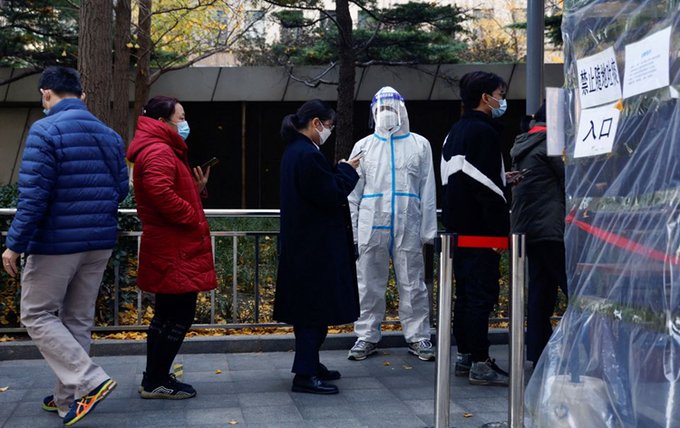Chinese cities rush to ‘live with COVID-19’ amid unprecedented first wave of infections and policy chaos
Chinese authorities are rushing to “live with COVID-19” even as country is in the grip of first COVID wave amid an unprepared exit from its zero-COVID policy and report of an estimated million COVID deaths in 2023.
As infections spread out from big cities to smaller ones and rural areas, major Chinese cities appear quiet as people stayed home, either due to the infection or due to the fear of getting it as infections continue to surge.
In a major backflip on Monday, the megacity of Chongqing in southwestern China urged people with mild Covid-19 symptoms or no symptoms at all to work as usual.
It comes a day after the eastern province of Zhejiang – a major economic hub in China – said those with no symptoms could “continue to work, if need be. It appeared as if China – which was ardently pursuing its “Zero-COVID” policy till a few days ago – has “Zero policy for COVID” management at the moment.
Residents across China are reporting countless cases of Covid in their families, relatives and societies, as officials conceded it was “impossible” to keep track of asymptomatic infections, and it would no longer be counting them. Hospitals in many cities are overwhelmed with rising number of COVID patients while official numbers are going down.
Amid all this confusion and doubts over China’s COVID numbers, Beijing authorities on Monday announced two COVID-related deaths after more than a month of an exponential surge in COVID cases which continued even before China relaxed its COVID curbs.
These were the first officially reported deaths since the dramatic easing of restrictions on December 7, despite widespread reports of fatalities and busy funeral homes.
China’s under-equipped medical system and low rates of vaccination among the elderly and ineffective Chinese vaccines are major reasons fueling concerns of widespread fatalities as country is bracing up for three waves of infections.
The elderly aged 65 and above exceed 200 million people, accounting for 14.2 percent of the Chinese population by the end of 2021. Vaccine hesitancy is still reported in many parts of China.
China has not yet allowed foreign m-RNA vaccines. It has yet to introduce its own version of an mRNA vaccine, and questions remain over their efficacy compared with foreign-made mRNA counterparts.
Other major cities are also facing a surge in infections. Shanghai has order for online schools from Monday. In the southern metropolis of Guangzhou, authorities are continuing online school.
Wu Zunyou, the chief epidemiologist at the Chinese CDC, said the country is being hit by the first of three expected waves of infections this winter. Speaking at a conference in Beijing on Saturday, Wu said the current wave would run until mid-January.
The second wave is expected to last from late January to mid-February next year, triggered by the mass travel ahead of the Lunar New Year holiday, which falls on January 21.
A third wave of cases would run from late February to mid-March as people returned to work after the week-long holiday, Wu said.


Comments are closed.